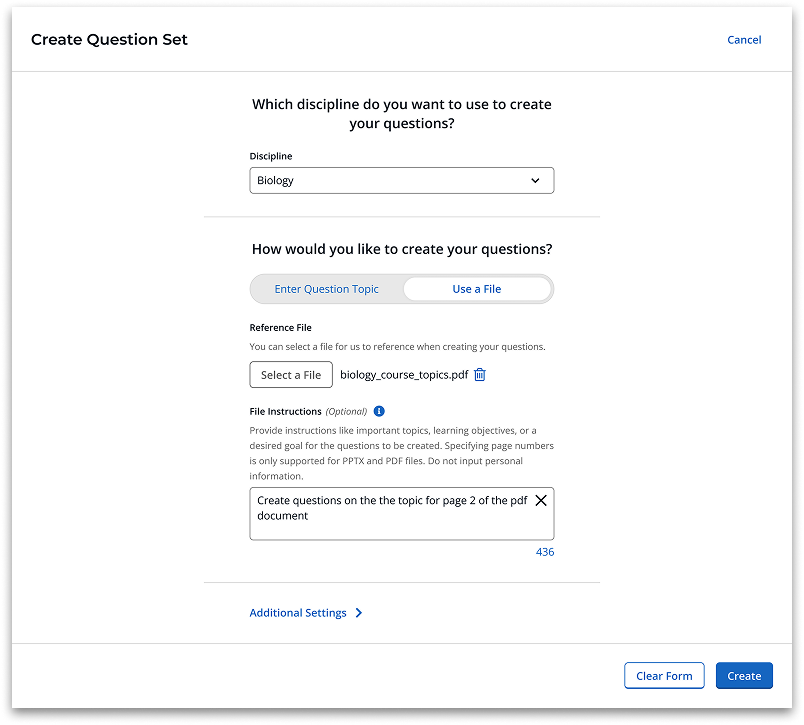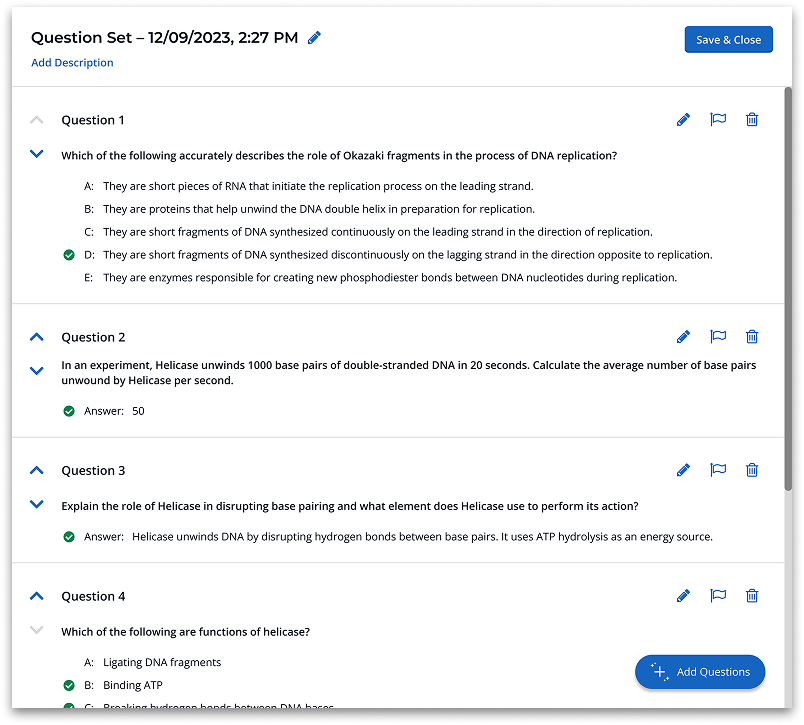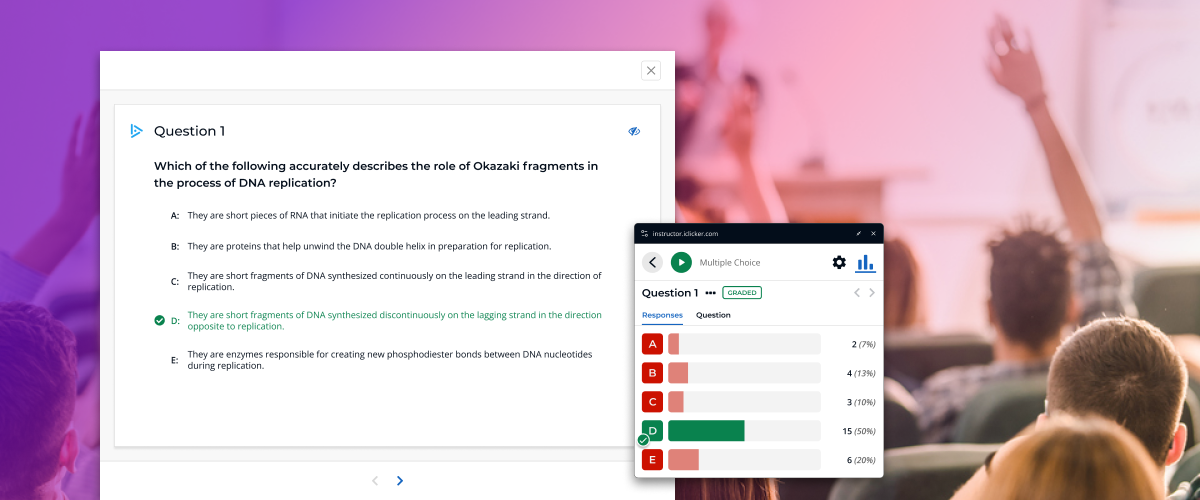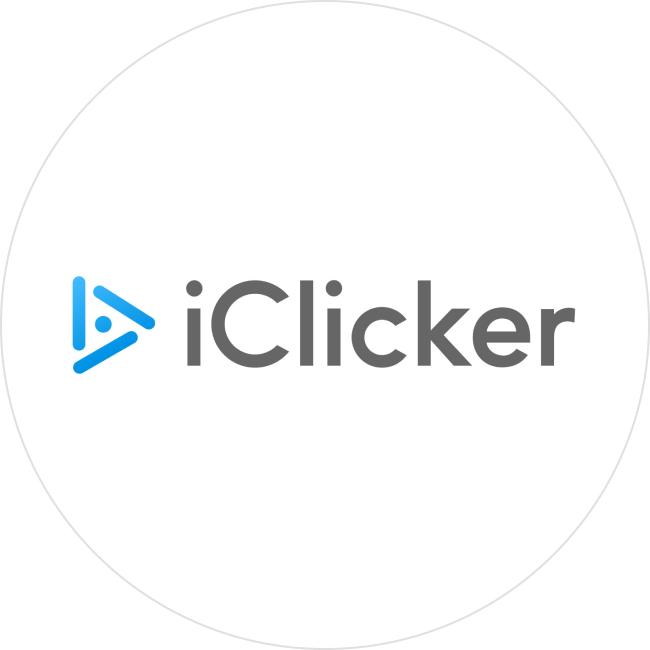iClicker AI Question Creator
How our staged approach to rapid feature development resulted in a faster, more confident launch.
When Macmillan Learning wanted to experiment with AI-powered question generation for their iClicker platform — a leading in-class engagement tool that helps instructors create interactive polling experiences and gauge student understanding in real-time — they needed to balance innovation with the high standards expected in educational technology. Through a strategic beta-first approach and right-sized UX investment, the team successfully launched iClicker's AI Question Creator — proving that thoughtful design collaboration can accelerate rather than delay AI experimentation while enhancing instructors' ability to create compelling, pedagogically sound questions that drive meaningful classroom interaction.
Smart UX Strategy Accelerated the AI Feature Launch.
Instructors struggled to create fresh questions quickly, especially new teachers without existing materials and experienced instructors whose content had grown stale over time.
Applied right-sized UX approach through progressive beta phases, focusing on learning over polish while maintaining educational product standards and pedagogical rigor.
The first AI feature to launch across the Macmillan ecosystem, now available to 5,000 instructors.
The AI Question Creator paves the way for a more dynamic, adaptive, and interactive learning environment. The tool's intelligent design saves instructors time, allowing them to spend it where it's most important, which is engaging with their students.
Steven Harper-Ray, VP of New Markets, Macmillan Learning
How to Test and Release New AI Features Faster: Progressive UX Strategy
Starting with a fast and focused team and a small beta group to experiment and test more quickly, we scaled to an appropriately larger test group, then to a full market release, iterating and perfecting the designs as we progressed.

Minimal UX Investment Allowed for Faster Testing
Started with 2 days of UX work for 5–10 instructor beta, focusing on removing usability barriers rather than comprehensive design. The team didn't try to solve every possible problem, instead ensuring the testing experience wouldn't interfere with validating core AI functionality.

Progressive Scaling Approach Increased Confidence in Design Choices
Embraced "experiment and fail fast" model, scaling from 5–10 instructors to 5,000, then to full market release. Each phase had different technical requirements, particularly around managing AI token costs, with the team accepting throwaway work to prioritize learning over polished deliverables.

Closer Designer-Engineer Collaboration Shortened Timelines
A core team including a representative from UX, engineering, and product strategy kept the project lean and focused. The designer and engineer worked in close partnership, enabling rapid iteration without typical team overhead while freeing leadership to focus on strategic decisions.
Key Features Delivered
From content creation to custom and unique questions that ensure authentic assessment, the solutions were targeted for instructor needs and pedagogically informed.
CREATION
REVIEW
Effortless Question Creation
Instructors can specify discipline, topic, question type, desired rigor level, course level, and learning taxonomy to generate up to 50 unique questions in minutes, ensuring alignment with teaching goals.
File Upload Integration
StudInstructors can specify discipline, topic, question type, desired rigor level, course level, and learning taxonomy to generate up to 50 unique questions in minutes, ensuring alignment with teaching goals.
Progressive Disclosure
Advanced settings collapsed by default for power users, with prompt engineering rooted in modern pedagogy and backed by learning science including Bloom's taxonomy integration.
Complete Instructor Oversight
Instructors can title, organize, and repurpose question sets across courses while maintaining full editing control — reviewing, flagging, and deleting questions to ensure alignment with teaching goals.
Seamless Content Expansion
Students can easily identify and review the different activities that occurred during class.
Replacing technical jargon with conversational language
Instructors can quickly add more questions during review to cover gaps or extend coverage across topics. This ensures their final set is both comprehensive and tailored to course needs without interrupting workflow.


Results and Market Impact
The iClicker AI Question Creator became the first AI feature to successfully launch across the entire Macmillan Learning ecosystem, launching as a beta to 5,000 instructors before full commercial release. The feature enables instructors to generate questions that can be deployed to students in seconds for polls, quizzes, and assignments.
The beta-first approach proved faster than traditional upfront design methods would have been for AI features requiring real usage data. Strategic UX involvement from the beginning enabled smart go-to-market decisions without typical delays, while the lean collaboration model demonstrated that UX accelerates rather than delays AI experimentation when applied strategically.
The project's success established a replicable framework for better and faster AI feature development, creating organizational learning that extends beyond this single feature implementation.


About iClicker
iClicker, a core offering within Macmillan Learning’s (ML) suite of products designed to engage students before, during and after class, is the market leader in student response and classroom engagement with over 5,000 instructor and 7 million student users at over 1,100 institutions.
About Macmillan Learning
Based in the US and Canada, Macmillan Learning partners with the world’s best researchers, educators, administrators, and developers to deliver sound pedagogical solutions designed to facilitate teaching and learning opportunities that spark student engagement and improve outcomes.
Transform User Problems into User Delight
Most EdTech teams know something isn't working — but knowing what to fix, how to fix it, and in what order requires specialized expertise.
Pinpoint Real User Problems
Our Research & Testing services can help you pinpoint what's actually broken and why.
Learn MoreMake Confident Product Decisions
Our Ideation & Planning services help you prioritize roadmap updates with business justification.
Learn MoreDesign and Validate Before You Build
Our Design & Prototyping services help you reduce engineering risks and costly reworks.
Learn More